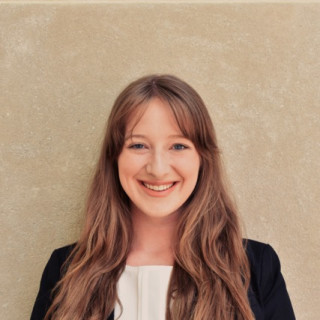The amount of time a clinician spends on EHRs has been shown to be costly, in terms of both productivity and clinician satisfaction. Using a medical scribe has been shown to decrease clinician burnout, improve work efficiency, improve patient experience, and optimize documentation. However, scribes also give clinicians the chance to mentor pre-health professionals.
Dr. Ryan Hess, an orthopaedic surgeon, has used a medical scribe since 2016, and he witnessed his first scribe, Dr. Jessica Flakne, begin her residency in orthopaedic surgery this July. “It’s been super rewarding to watch my former scribes go on to be successful,” he said. “It was a side benefit I hadn’t considered before starting with a scribe.”
Teaching is one of the greatest joys in medicine for many, allowing clinicians to view their own work with a fresh set of eyes. The in-person scribe is often a highly motivated young pre-health professional. As the competition for medical school acceptance rises, getting scribe experience is becoming a standard for pre-medical students. This opportunity was more valuable to Dr. Flakne than anything else in her pre-medical career. “Without scribing, you enter medical school with a skewed idea of what a doctor does during the day. Especially for me, coming from a family without any health care providers in it,” she said.
Though the core responsibilities of a scribe are to record accurate and detailed documentation, their services may differ based on being in-person, virtual, or AI scribes. In-person scribes may be able to move around to view, and document, the full exam, reducing dictation required from the physician. In addition to transcription, they may be trained on clinical assistant or administrative duties, or collaboration with the care team — anything to fill in gaps in practice.
Because scribing is an inherently observational role, many physicians find themselves in a student-teacher relationship. Building this relationship with his scribes is something that came naturally to Dr. Hess. “They're with you a lot, in some ways almost as much as your family really, because some days you're in clinic for eight or nine hours, and they're in the room with you for every encounter,” he explained. “I think it's a good chance for them to see what works and what doesn't or what kind of communication style works well for people, and to see firsthand the pros and cons of a medical career.”
Dr. Hess further leans into his teacher role by explaining imaging, encouraging shadowing in the OR, and remaining a mentor to his scribes as they continue to progress through their medical training. As a medical student, Dr. Flakne got back in touch with Dr. Hess when she was struggling to fit in her rotations due to the pandemic. “One of the harder parts about medical school is figuring out what career path you want to follow. This was made even more challenging by COVID this year, not being able to be in person for everything I wanted to be in person for,” she shared. “Being able to touch base with him and ask him how he likes his job before I committed to it for the rest of my life is invaluable.”
Not every physician has the luxury to have an in-person scribe. Other options might be more beneficial for clinicians who live in rural areas, for those who frequently travel from one clinic to another, or for those who prefer a more discreet option for their patient experience. The virtual scribe most often consists of a team of scribes who are familiar with the physician workflow and documentation preferences, allowing for uninterrupted coverage. One hybrid approach is to use AI technology in tandem with scribes, as The Central Park Field Hospital did. This strategy resulted in completed notes available in the EHR at the end of the day, while still improving patient experience and reducing burnout.
As the role of the scribe evolves, so does the population that uses scribes. Craig Newman, chief strategy officer at Health Channels reported, “As much as we talk about physician burnout, there’s a growing concern for nurse wellness and helping nurses work top-of-license.” He has noticed a shift in need: “Many of the partners we work with are looking to bring on scribes to free NP/PAs to work top-of-license, utilizing the scribe to focus on that administrative work.” Mentorship may require more effort for scribes in a predominantly administrative role or for those working virtually, but pre-health students will likely benefit from being involved in any part of the medical team.
Whichever level of support a clinician decides to use, research increasingly supports the use of scribes. In an academic urology practice, using scribes as low-cost, integrated labor resulted in a return-to-investment ratio of greater than 6-to-1 in just three months, while maintaining patient satisfaction. Efficiency and patients seen per hour increase with scribes, creating the jump in revenue. Dr. Hess noted, “I would probably pay my scribes double what they make, to be perfectly honest.”
But to some scribes, like Dr. Flakne, payment is far from the only motivator. “It wasn’t just a job,” she said. “It was a learning experience.”
What actions do you take to be a good mentor in medicine? Share your experiences in the comments below!







